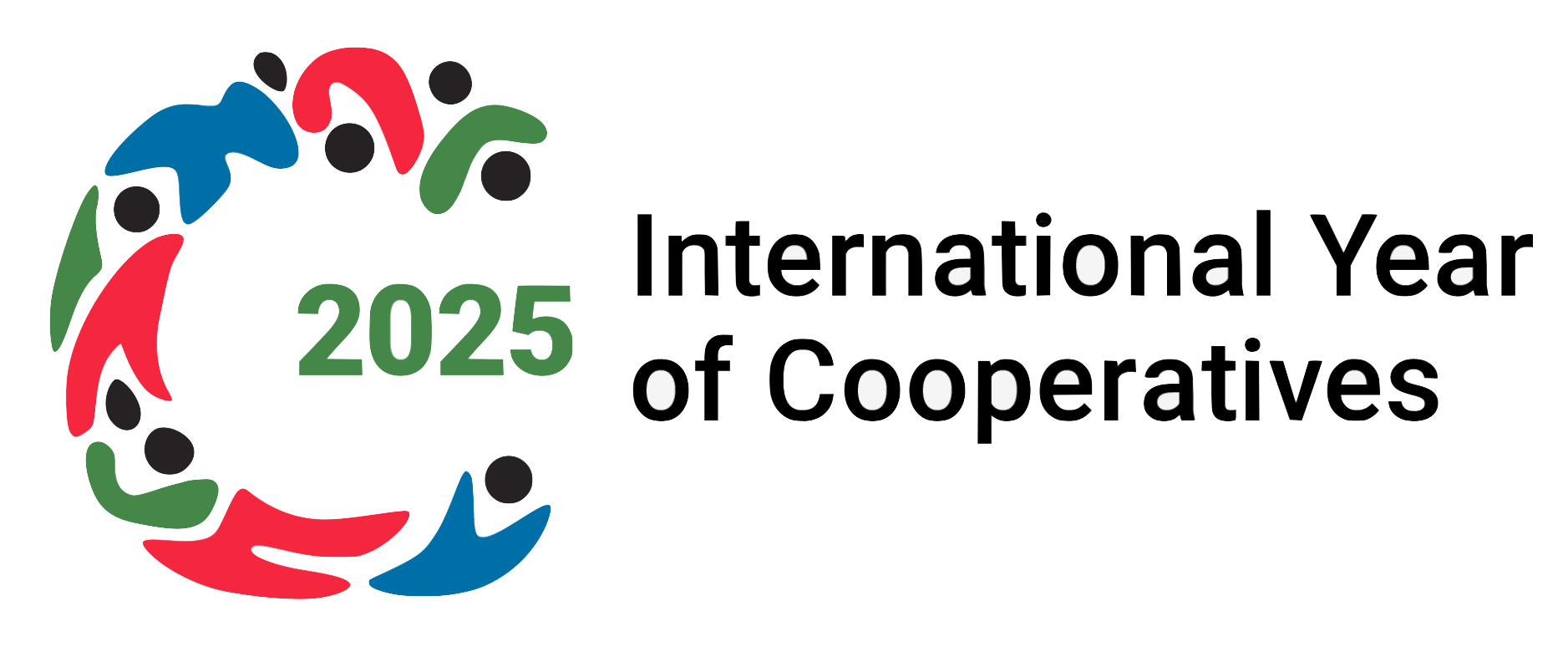Ardelaine
_ Ardèche, Rhône-Alpes, France _ Wool garments and mattresses _ With the contribution of Béatrice Barras With this first experience, we focus both on the historical evolution of the cooperative during its three decades and a half of existence, and on its impact on territorial development.
Evolution
The history of Ardelaine goes back to 1975 when the leaders of an association of youth groups decided to renovate the former spinning mill in St. Pierreville in the Ardèche department, in order to revive and to promote the use of local wool and to restructure the sector with a view to establishing an industry based on an ecological and fair trade approach. The idea was to influence local development by promoting the local resources of a neglected territory. Although the project may have seemed utopian, it was finally implemented in 1982, after 7 years of preparation through the creation of a worker cooperative, known as Ardelaine, with an initial capital of only 3200 FF (€488).
The activities ranged from shearing to the marketing of finished products such as mattresses, quilts, pillows, pullovers etc., and included cleaning and carding. Over the course of the following years, efforts were focussed on the development of the enterprise through the diversification of the products and of the marketing methods. In 1986, a knitting and garments workshop was established in the town of Valence. Sales were promoted at natural product exhibitions in France and Europe and through the publication of a mail order sales catalogue. The creation of new jobs was supported by the Rhône Alpes Region (in the form of Regional Employment Incentives). In 1990, the workforce reached 12 workers. Following a period during which marketing efforts were undertaken towards other European countries, a decision was taken to re-focus activities at the site level.
This decision led to the establishment, in 1991, of the Wool Museum on the Ardelaine site. The company also invested in a purification system for water used in the wool washing process, which obtained approval for classified installations. In 1996, the cooperative had 15 workers.
In 2000, the site was rehabilitated with a view to opening a new museum, as a logical extension of the first one, but this time dedicated to the history of the mechanisation of the methods used to work with wool. The aim was to guarantee the long-term development and consolidation of the local anchoring and impact of Ardelaine. In 2001, the number of workers rose to 25. In 2005, despite all of the expectations generated by the new investment in the museum, there was a fall in the number of visitors to the site, notably amongst the group’s customer base.
This development was due, in no small part, to the fact that the site was not in a position to offer a full-day programme to tourist operators, given the limited availability of catering facilities. Discussion then took place regarding the possibility of creating a hospitality and catering area that would be complementary to the local tourist sites, in collaboration with the Bergerades Association . This appeared to be necessary in order to encourage a wide range of visitors to visit the site. The project was considered in the wider context of the issues faced by this rural area with a view to making the most of its local resources. An application was submitted in response to a call for projects issued by DATAR – “Rural Areas of Excellence”, in collaboration with the Community of the Communes des Châtaigniers.
The project has a total investment of €800,000 for the creation of facilities for hospitality services (ticket office, café, bookshop), the distribution of cultural products, catering services, and the processing and development of local and organic food products.
The new facilities were opened in July 2010. Through its strategy based on local anchoring, diversification and the creation of jobs based on territorial resources, over the course of 25 years the Ardelaine cooperative has created and sustained an average of more than one full-time job per year.
The next stage for the cooperative is to become a springboard for the creation of new complementary activities and above all, to consolidate those that already exist, compensating for the geographical isolation of the site and improving its attractiveness.
Activities
The cooperative’s main objective was to create employment in a depopulated rural area through the development and production of a local resource, namely sheep’s wool (it is located in the department’s main sheep-rearing area). The chosen method was to restructure the sector, from shearing to the marketing of the finished (non-chemically treated and fair trade) products. It is for this reason that the cooperative now has developed different types of activities: - Up stream (shearing, collection, carding, wool preparation); - Processing (mattress workshop, bedding workshop, knitting and garments workshop); - Direct marketing (sales outlet located on site, trade fairs and exhibitions for organic products, mail order and internet sales); - Tourism and Culture (itinerary including a visit to the museum on the history of the methods used to work with wool).
Ardelaine, a vector for social inclusion
In order to assess the role played by the Ardelaine cooperative as a vector for social inclusion, there is a need to take into account its specific geographical location: the cooperative is located in a small village in the mid-range of the Ardeche mountains, one hour from the nearest town. Although this territory was highly populated before the XXth century, many of its inhabitants were lost during the First World War and the village became even more depopulated after the Second World War. This area has been designated as a Rural Revitalisation Zone.
Ardelaine thus endeavours to create jobs with a view to keeping the population in the area and to attract new members of the active population, notably young people, since the average age was very high. Thus, each job created in this area is a factor of inclusion, since the whole population finds itself in a difficult situation (the unskilled workers and the elderly are the two main categories of people who stay in the local area). The supply of local salaried work is limited to the retirement home and to the local council’s administrative staff (treasury department, town hall and Community of village councils). It would be fair to say that the social handicap is “territorial” in nature.
In 1986, Ardelaine set up premises in a disadvantaged area in the town of Valence. The premises in question were its knitting and garments workshop, which employed 4 workers. The female cooperators who initiated this project attempted to transpose the methods used by Ardelaine in the context of rural development to the development of a sensitive urban neighbourhood. It is not the workshop and its economic activities that have the strongest impact, rather it is their action as local people, working in a community setting, combined with their presence within the workshop.
They play a mediation role with the local institutions (housing associations, municipality, etc.). Their activities have led to the creation of gardens in the vicinity of local buildings (20 families). The success of this project has encouraged the municipality to develop other similar projects. They play the role of a socio-economic actor that is well integrated within the neighbourhood.
The occupations carried out by the Ardelaine cooperative are very particular in that they involve crafts and trades that have either already disappeared or are in the process of disappearing. For this reason, the cooperative has received the “Living heritage enterprise” label from the French state. It is therefore required to train its workforce in these production-related crafts. It is not easy for the cooperative to find people who have the necessary qualifications to carry out the marketing and administration tasks on the local employment market and so it also has to train people who display an aptitude in these areas. Furthermore, it has also set up training courses on “the cooperative enterprise culture” so that its workforce develops an understanding of the cooperative dimension of the enterprise. Accordingly, in-house training and self-education play a significant role within the cooperative, which can then be considered to be a learning enterprise. The cooperative’s 44 employees are of different ages and origins, some of whom are from the local area, while others have moved into it.
When a new employee is recruited, he or she goes on an enterprise induction course that brings them into contact with each member of the workforce and each craft practiced within the enterprise. A one or two day theoretical training course takes place each year (covering all wool-related tasks, as well as a guide to basic economics) and a trip is organised for all of the workers so that they can meet with workers from another enterprise (usually a fellow cooperative). Technical training is also provided. Obviously a great deal of time is taken up by these training courses, which however allow for a good degree of integration of each individual worker and a satisfactory level of involvement of the workforce in the cooperative’s general plans.
Ardelaine has a long-standing relationship with the 250 breeders whose sheep it shears and collects wool from. In many cases, the cooperative has worked with the same breeders for more than 25 years or has established a working relationship with new breeders who have taken over sheep farms in the area. However, it has been difficult to get the breeders involved as members of the cooperative, because they are governed by farming legislation and, since the Treaty of Rome, wool is considered to be an industrial, rather than an agricultural, product once it has been sheared. Under the terms of French legislation on cooperatives, a worker cooperative (or “SCOP” as it is called in France) cannot establish the same type of membership for self-employed farmers that an agricultural cooperative is able to establish.
As a direct consequence of globalisation, the breeders’ income can no longer be guaranteed solely by their production, whether this is wool or meat. Indeed, the provision of European aid, which accounts for close to 50% of their turnover, is vital if they are to maintain their activity. Wool is only a very marginal product (close to 2% of their turnover). However, in order to be as fair as possible, Ardelaine has refused to apply market prices and has, instead, established prices based on quality and a minimum price. Furthermore, it enhances the value of the wool by providing coupons that may be used to buy its finished products and which effectively double the monetary value of the wool purchased from the breeder. In this way, the breeders have been able to provide their family and acquaintances with products made out of wool from their flock.
Finally, the shearing service is absolutely indispensable to the breeders, since sheep must be sheared once a year to ensure their good health and it is very difficult for the breeders to provide this very specific and meticulous service themselves. The presence of an industrial SME (small or medium-sized enterprise) that has a workforce of 44 workers, in a small village that otherwise would probably not have any other form of industrial activity, has a significant impact on the territory. It serves to keep the average age of the population younger and to keep the school and other services such as the post office open. In 2008, a municipal child care facility was set up for pre-school aged children. In addition, all of the other local businesses have managed to remain open: butcher, baker, newsagent, bar, hotel and restaurant. This is due, in no small part, to the influx of visitors generated by the cooperative through its sales and tourist activities (320, 000 visitors between 1991 and 2009, an average of 15,000 visitors per year).
There is also a significant amount of economic activities in the area that have been created indirectly (building, supplies, services …). Over the last few years, a great deal of work has been carried out to modernise the local services (tax office, public hall, medical facilities, tourist office, new police station with five living quarters, a new and extremely well-equipped fire station, retirement home…). The inflow of visitors to St. Pierreville who come to the area to visit the cooperative’s two museums has considerably altered the esteem that the village inhabitants have for their heritage and their vision of the future of this territory. St. Pierreville is the main village in its district and this means that it has a particular role to play as a central market place, even though it is far away from the network of main roads.
The surrounding villages do not benefit from the same degree of vitality with regard to their public and private facilities. There is no doubt that the dynamism of the municipality in terms of its new facilities is related to the increase in its population, its reputation and its visibility. This is a process in which Ardelaine plays a significant part. Relations between the cooperative and the various local institutions had been marked by a certain indifference for a long time. Since the cooperative is exempt, like all cooperatives in France, from local taxes, the elected council representatives never really had the impression that they were benefitting directly from the cooperative’s presence in the territory. However, these relationships have changed over the course of time in light of the fact that the cooperative’s positive impact has become clear for all members of the population.
Today, the cooperative works in partnership with the Communauté de Communes (Community of the Local Councils), of which it is part in the framework of a State promoted “Rural Areas of Excellence” project, which is managed as a public/private partnership. The development of the enterprise has been supported on several occasions by the European Union, the State, the Rhône Alpes Region or the Département. It has also received support from foundations. On average, this support corresponds to 10% of its investments.
The members’ contributions are very significant. They have made a major contribution to the cooperative’s development, often to the detriment of wage increases. Thus far, this has been a conscious and shared decision, since the creation of new jobs is considered to be a priority. In this sense, the cooperative may rightly claim to be an economic actor that somehow manages to integrate the general interest. Ardelaine has not experienced a severe crisis thus far. Although its development has been slow, it has been on-going (an average of one job created per year).
At times when large investments have been made, it has been able to find the necessary support from public bodies or private individuals who have been prepared to contribute to its capital. Only once in 27 years, it had to make one worker redundant and the case was settled by the tribunal for enterprises, which ruled in favour of the cooperative. Despite the temptation of turning to the export markets, the cooperative has preferred to adopt a strategy based on consolidating its position: direct sales at the national level (short circuit), organic growth, diversification of activities at the service of its local territory. In conclusion, one can say that the long-term vision, the sense of team spirit, the complementarity of skills and the cooperative culture have been key factors in the success of this enterprise that operates outside the conventional economic circuits.
Ardelaine could neither have existed nor have played its role in the territory if it had adopted the traditional objectives and strategic choices of an SME. It is for this very reason that Ardelaine has called itself a “local development cooperative”. In fact, its members consider that the cooperative model is an appropriate response to the economic restructuring of territories experiencing difficulties. With regard to its future, the cooperative members consider that it is closely linked to its ability to maintain the cooperative spirit and culture. In order to do this, it invests in the training of its members, takes part in research in this area and expresses its experiences in books that describe collective actions, in conferences and networked enterprise training courses for future cooperative actors.
Development and sustainability of employment in the cooperative
The following table retraces the development of employment along Ardelaine’s history:
| 1982 | 1990 | 1996 | 2001 | 2009 |
|---|---|---|---|---|
| 1 jobs | 12 jobs | 15 jobs | 25 jobs | 44 jobs |
Five of the cooperative’s seven founders still work for the cooperative (in some cases they worked on a voluntary basis before becoming paid members of the workforce) and there still remains an original non-worker member.
The workforce figures for 2009 show that, out of a total of 44 workers (31 women and 13 men) there were:
- 2 workers with more than 25 years of service
- 5 workers with between 20 and 25 years of service
- 2 workers with between 15 and 20 years of service
- 4 workers with between 10 and 15 years of service
- 10 workers with between 5 and 10 years of service
- 12 workers with less than 5 years of service
- 9 workers with less than one year of service.
This pattern of length of service provides a good example of the long-term sustainability of jobs in worker cooperatives. The conditions regarding the long-term nature of the cooperative workers’ jobs, in Ardelaine’s specific case, are related to several factors: - Some of the workers are from the area and Ardelaine provides them with employment. If the job that they do meets with their aspirations, then it becomes a long-term job.
On the other hand, several people have left Ardelaine to create their own activity in the same area. - Some of the workers are not from the area, but they have come to the area because Ardelaine has been able to provide them with employment. They are attracted to the cooperative’s “enterprise culture” and its plans and they feel that they possess the skills to meet with the cooperative’s needs. In order for their job to become long-term, they must fully integrate from a professional (employment) and relationships (working as part of a team) point of view and they must also become integrated in local life. Furthermore, they must also be satisfied with their personal life.
When people do leave the cooperative, the reasons are often related to developments regarding their personal life (refusal of their spouse to join them from other regions, divorce). - Some of the workers are newcomers into the area who go and knock on Ardelaine’s door. Ardelaine plays a role in helping these workers to settle into the area. The cooperative enables the newcomers to find temporary employment that provides them with the means of subsistence until their own plans take off (farming, small craft business…).
As the local employment services have recently commented, Ardelaine has also helped many people to become integrated within the local area. Some of these people have opted to continue to work for the cooperative. Generally speaking, one may say that the employment created by Ardelaine is particularly resilient, both in terms of the jobs created within the cooperative and also through the economic integration of new people in the area.
Future prospects
The Ardelaine cooperative has a range of future prospects, in the short term and the long term, and both globally and locally: In the short term, and at the local level, there are plans to construct a new building with a surface area of 650m², in order to make the local area more attractive to tourists:
- A reception area offering complementary services, including a shop selling articles related to the museums
- A space to develop and to diversify events and exhibitions
- Creation of a restaurant (to promote local food products, to educate people about taste and local products, organic food, appellation of controlled origin).
The new activities started in 2010 and should lead to the creation of between 5 and 7 jobs. A new sister cooperative, called La Carderie, was established in September 2010 in the catering sector. At the same time, Ardelaine is trying to develop educational tools on the sustainable development of the social economy and on local development. The cooperative plays hosts to many school visits (of all ages, right up to university students).
The cooperative is working on these subjects in partnership with the Rhône Alpes Region (having been identified as one of the “treasures of sustainable development in the Rhône Alpes Region”) and with the Monts d’Ardèche Regional Natural Park. Furthermore, the cooperative is seeking to develop a platform for dialogue with all of the actors in the sector: upstream (with the 230 breeders), at the inter-sectoral level (various sectors covered by Ardelaine) and downstream (the clients).
In order to achieve this aim, it currently coordinates a network of 2,000 clients who have expressed solidarity with its values and who have also expressed their interest in the cooperative, beyond the mere consumption of its products.
In the medium term, the Ardelaine members intend to focus on the passing on of its experience, training and research: _ by taking part in research and reflection networks;
_ by creating a group of actors interested in exchanging experiences and reflections;
_ by creating training courses along the lines of an extramural university;
_ so as to contribute to the creation of learning and socially and territorially responsible cooperative enterprises.
Conclusions
The Ardelaine cooperative was set up in a difficult context, since its creation coincided with the collapse of the locally sourced wool market on the one hand and the beginning of the deconstruction of the national wool industry on the other. It put down its roots in a rural territory that was considered to have “no future” and based its business on a heritage that was considered to have “no value”.
Rather than basing its strategic objective on re-launching wool spinning activities, it chose to focus on the development and promotion of local wool through the restructuring of the entire sector. It opted for environmentally friendly processes and established working relations with its wool suppliers based on fair trade. The cooperative’s decision to exercise commercial control over its products by according priority to direct sales enabled it to market these products at the largest European shows and fairs for organic products.
The increase in the cooperative’s revenue has allowed it to create new jobs and to finance the investment required to improve production conditions and capacities. However, this development has led to further reflection upon the way in which the enterprise should grow and the consequences of this growth upon the lives of the worker-members. The cooperative turned down a market opportunity in Japan and decided to re-focus its activity at the territorial level by creating a cultural and tourist sector at the production site. Ardelaine has made a conscious decision to resist the general tendency towards a de-localised economy that is instrumentalized by the financial markets and the de-humanisation of organisations. The members of the cooperative consider that its real business is neither wool nor tourism, rather it is the development of the territory in which it is embedded.
They plan to pursue the growth of the cooperative through the diversification of its activities, as long as this is of benefit to the territory. The latest project is designed to further develop and to promote food products. The initial idea to “develop and to promote a resource from this territory”, has become, for Ardelaine’s members, “to promote and to develop the territory”.
ARDELAINE – France
Worker cooperative (SCOP)
Address: Puausson 07190 SAINT PIERREVILLE
Established: 1982
Sector: Promotion of sheep wool (local wool sector)
Workers: 44
Worker members: 22
Turnover: € 1.788 million
Website: www.ardelaine.fr
Contact: Béatrice Barras
bea.barras@ardelaine.fr
For further reading : Béatrice Barras (2003) : Moutons rebelles, Ardelaine la fibre développement local ; Editions REPAS, can be ordered on www.ardelaine.fr
Order the book here: https://cecop.coop/works/cooperatives-territories-and-jobs-twenty-experiences-of-cooperatives-active-in-industry-and-services-across-europe
You can view this chapter of the book “Cooperatives, Territories and Jobs” in PDF by clicking here









